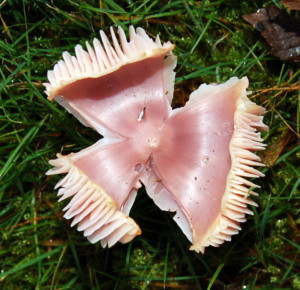COP15 – Biological Diversity
The 15th meeting of the Conference of the Parties to the Convention on Biological Diversity will take place in Kunming, China, from 11 – 15 October 2021.
What is the Conference of the Parties?
The Conference of the Parties is the governing body of the Convention on Biological Diversity, and advances implementation of the Convention through the decisions it takes at its periodic meetings.
The Convention on Biological Diversity (CBD) entered into force on 29 December 1993. It has 3 main objectives:
- The conservation of biological diversity
- The sustainable use of the components of biological diversity
- The fair and equitable sharing of the benefits arising out of the utilization of genetic resources
The Significance of COP15
COP15 will set out the post-2020 Global Biodiversity framework, including a new set of goals for nature over the next decade. The framework will set out an ambitious plan to implement broad action to address the drivers of biodiversity loss, to ensure that, by 2050, the shared vision of living in harmony with nature is fulfilled.
UK Involvement in COP15
The UK Devolved Administrations, through the 4 Countries Biodiversity Group, are considering the proposed targets and monitoring framework to 2030 and 2050, and actions to increase the extent and condition of natural ecosystems, improve the conservation status of species, enhance nature’s contribution to climate change mitigation and adaptation and ensure government policies and subsidies enhance biodiversity.
In the run-up to the UN Summit on Biodiversity in September 2020 and in preparation for adoption at COP15, the UK government signed up to the Leader’s Pledge for Nature, which has 10 ambitious targets to reverse biodiversity loss by 2030 (see Leaders pledge for Nature).
Why you should care about biodiversity loss

Put simply the loss of biodiversity threatens our food supplies, opportunities for recreation and tourism, sources of wood, medicines, purification of air and water, and energy. It also interferes with essential ecological functions such as the pollination of plants and crops, and the control of pests and diseases.
Based on current trends, an estimated 34,000 plant and 5,200 animal species – including one in eight of the world’s bird species – face extinction. Approximately 45% of the Earth’s original forests are gone, cleared mostly during the past century, and this figure continues to increase.
With global population estimated to reach 9 billion people by 2050 the demands on our planet’s natural resources will only increase and it is therefore essential that we come up with sustainable nature-based solutions to the problems that we face.
What impact will COP15 have on you
Achieving sustainable development will require countries to fundamentally redefine their policies on things such as land use, food, water, energy, employment, development, conservation, economics, and trade. For us, purchasing and consumption habits may have to change as we transition to more sustainable supply chains. It will mean delicately negotiating trade-offs as expanding populations require more land for housing and businesses are pressing for concessions.
For our farmers traditional land use and agricultural policies will shift away from environmentally harmful practices for land and marine ecosystems to promoting sustainable land and forest management. Eliminating habitat loss, unsustainable land use, deforestation, fragmentation, land degradation and genetic diversity will become major considerations.
Equally, addressing the unsustainable use of our coastal waters will take on a much higher importance, as will reducing the impact of invasive alien species on our biodiversity.
In short, the way we interact with biodiversity and ecosystems is going to change considerably going forward, and we all have a part to play.
Connection to COP26 UN Climate Change Conference
There is now wide recognition of the interlinkages between climate and nature. Healthy biodiversity plays a key role in regulating climate, reducing GHG emissions, sequestering carbon, reducing flooding risk and building climate resilience. Climate change will in turn impact upon natural habitats and species composition, and increase the risk from certain invasive alien species.
Follow the Convention on Biological Diversity on:




